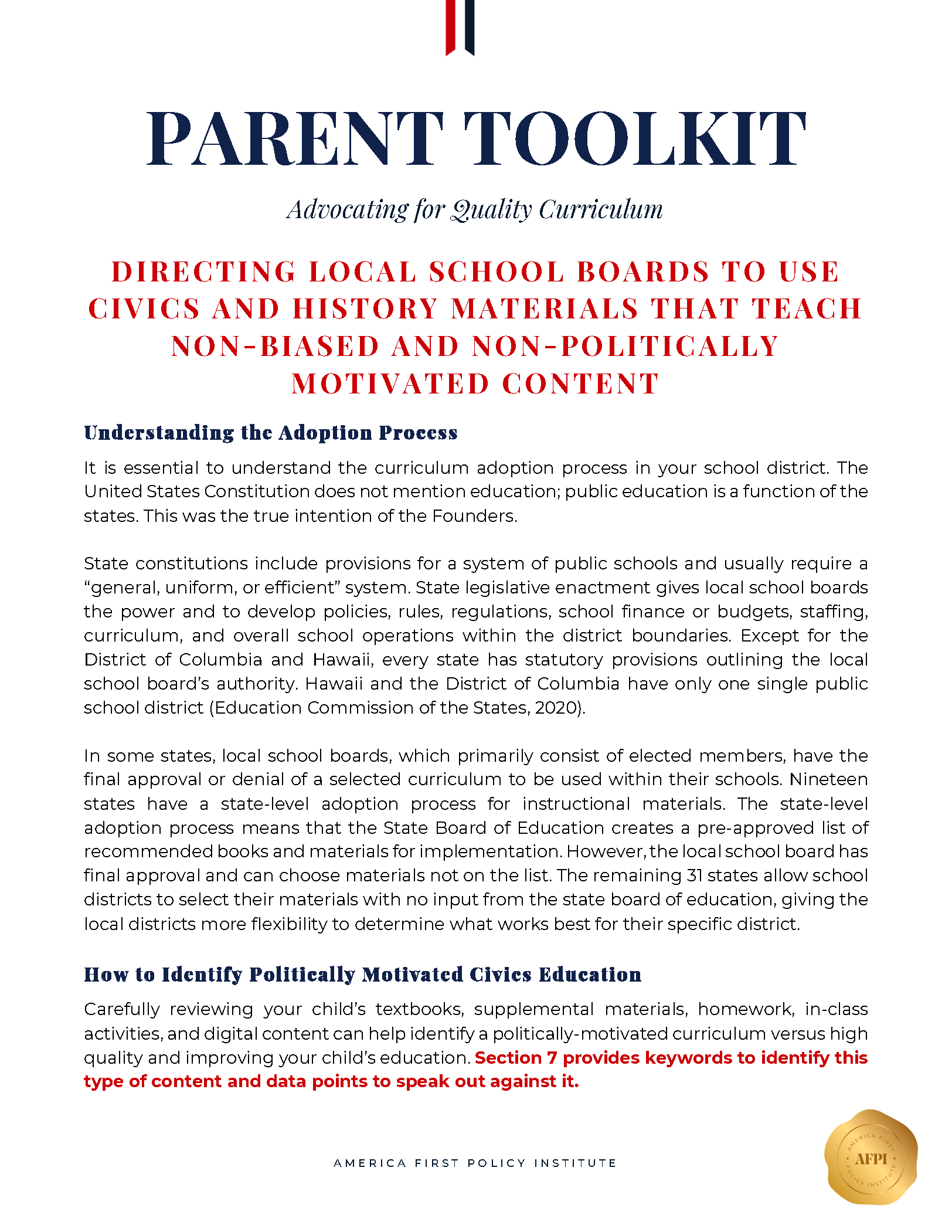Parent Toolkit - Advocating for Quality Curriculum: Directing Local School Boards to use Civics and History Materials that Teach Non-Biased and Non-Politically Motivated Contenet
Understanding the Adoption Process
It is essential to understand the curriculum adoption process in your school district. The United States Constitution does not mention education; public education is a function of the states. This was the true intention of the Founders.
State constitutions include provisions for a system of public schools and usually require a “general, uniform, or efficient” system. State legislative enactment gives local school boards the power and to develop policies, rules, regulations, school finance or budgets, staffing, curriculum, and overall school operations within the district boundaries. Except for the District of Columbia and Hawaii, every state has statutory provisions outlining the local school board’s authority. Hawaii and the District of Columbia have only one single public school district (Education Commission of the States, 2020).
In some states, local school boards, which primarily consist of elected members, have the final approval or denial of a selected curriculum to be used within their schools. Nineteen states have a state-level adoption process for instructional materials. The state-level adoption process means that the State Board of Education creates a pre-approved list of recommended books and materials for implementation. However, the local school board has final approval and can choose materials not on the list. The remaining 31 states allow school districts to select their materials with no input from the state board of education, giving the local districts more flexibility to determine what works best for their specific district.
How to Identify Politically Motivated Civics Education
Carefully reviewing your child’s textbooks, supplemental materials, homework, in-class activities, and digital content can help identify a politically-motivated curriculum versus high quality and improving your child’s education. Section 7 provides keywords to identify this type of content and data points to speak out against it.
How to Participate in The Curriculum Adoption Process
- Volunteer to participate in committees within the school district, including those of curriculum adoption.
- Attend school board meetings.
- Speak with board members individually and with parent groups.
- Contact your school and local school district and sign up to assist in the curriculum process, classroom, in school board working sessions, at the school at any time.
- Ask questions of teachers, principals, and school board members.
- Do not feel bad about asking questions. It is YOUR child, YOUR community, and YOUR tax dollars.
- Remember that you have a right to transparency. If the board is not being transparent, you can submit a freedom of information request to obtain desired information.
More Resources
July 06, 2023
AFPI Leads the Charge in Most Historic Year for School Choice Progress
At the America First Policy Institute (AFPI), we believe that the transformative progress on school choice will help prepare Americans for the rights and responsibilities of citizenship.
April 04, 2023
FACT SHEET: Colorado HB23-1003 Gives Parents Less Control Over Their Child’s Education
“I do not believe in co-parenting with the government, and I never will. Parental rights are a God-given blessing. I am deeply saddened to see our country even debating who should…
March 24, 2023
